Recognizable for their slender, long necks and incredible diving skills, there are 37 cormorant species, often referred to as the sea crow or the sea raven.
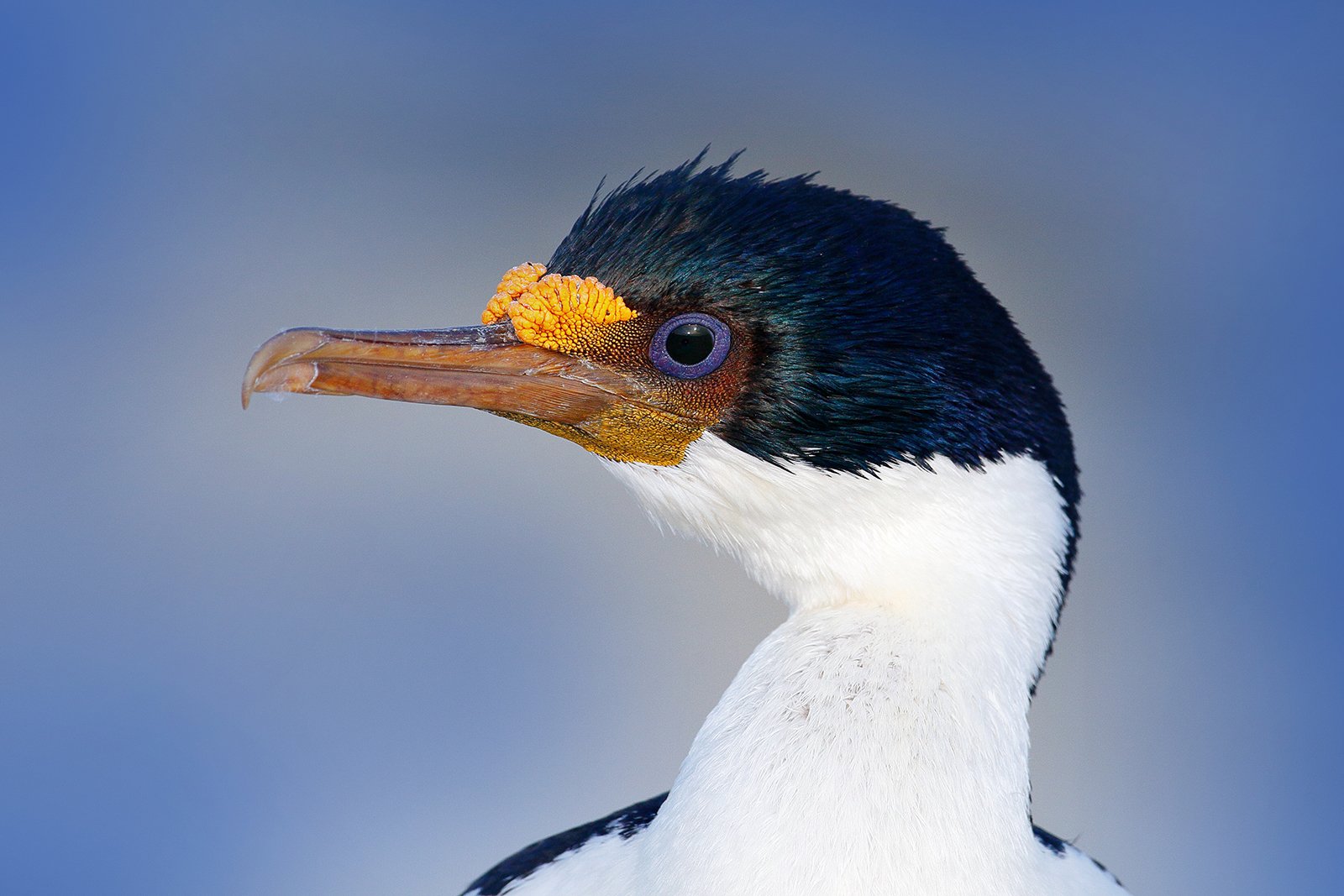
With their hooked bills and impressive diving techniques, cormorants are incredibly skilled at fishing.
Keep reading to learn more about where you can see cormorants, their habitat, and why they are known as expert divers.
Regional Habitat: Antarctica, Arctic, Asia, Europe, Africa, Oceania, North America
Name: Cormorant (Phalacrocorax carbo)
Length: 27.6-40.2 inches (70-102cm)
Weight: 91.7 - 130.5 oz (2600-3700g)
Conservation status: With populations in the millions (estimates suggest there are 1.4 - 2.1 million individual cormorants worldwide) the cormorant conservation status is classified as Least Concern on the IUCN Red List and their population numbers are increasing.
Diet: Mollusks and fish
Appearance: Black wings and backs, with white bellies and faces. Most cormorant species have a hooked bill that looks similar to that of a pelican. Their almost primitive appearance and long neck makes the cormorant look almost reptilian, and the cormorant can often be found preening or with its wings spread to dry.
Where to see cormorants: Explore the Antarctic Peninsula on expeditions such as Antarctic Explorer: Discovering the 7th Continent or Crossing the Circle: Southern Expedition for a great chance to see a cormorant or cormorant colony fishing or preening in their natural habitat.
Types of cormorants
There are many species of cormorants, including northern hemisphere and southern hemisphere species such as the double crested cormorant, great cormorant, black cormorant, large cormorant, flightless cormorant, long tailed cormorant, blue eyed shag, European shag, black shag, common shag and many other species.
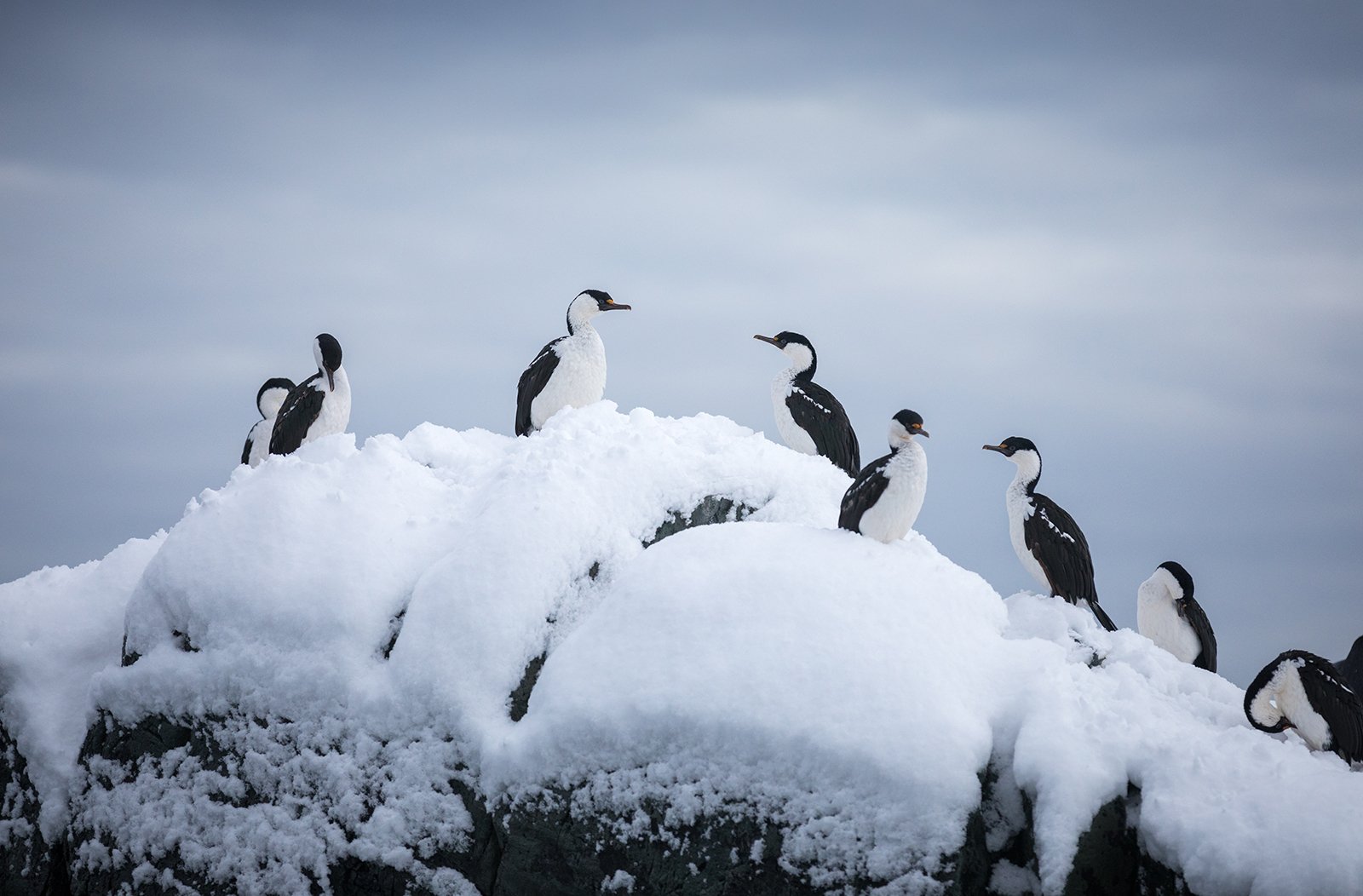
During a polar adventure, you're most likely to see the Antarctic and imperial shag, so be sure to book your trip around the best time to see Antarctic birds for your best chance to spot a cormorant.
Antarctic shag
The Antarctic shag is the only cormorant species that lives in Antarctica, and can be seen living on the Antarctic Peninsula, Elephant Island, and the South Shetland Islands.
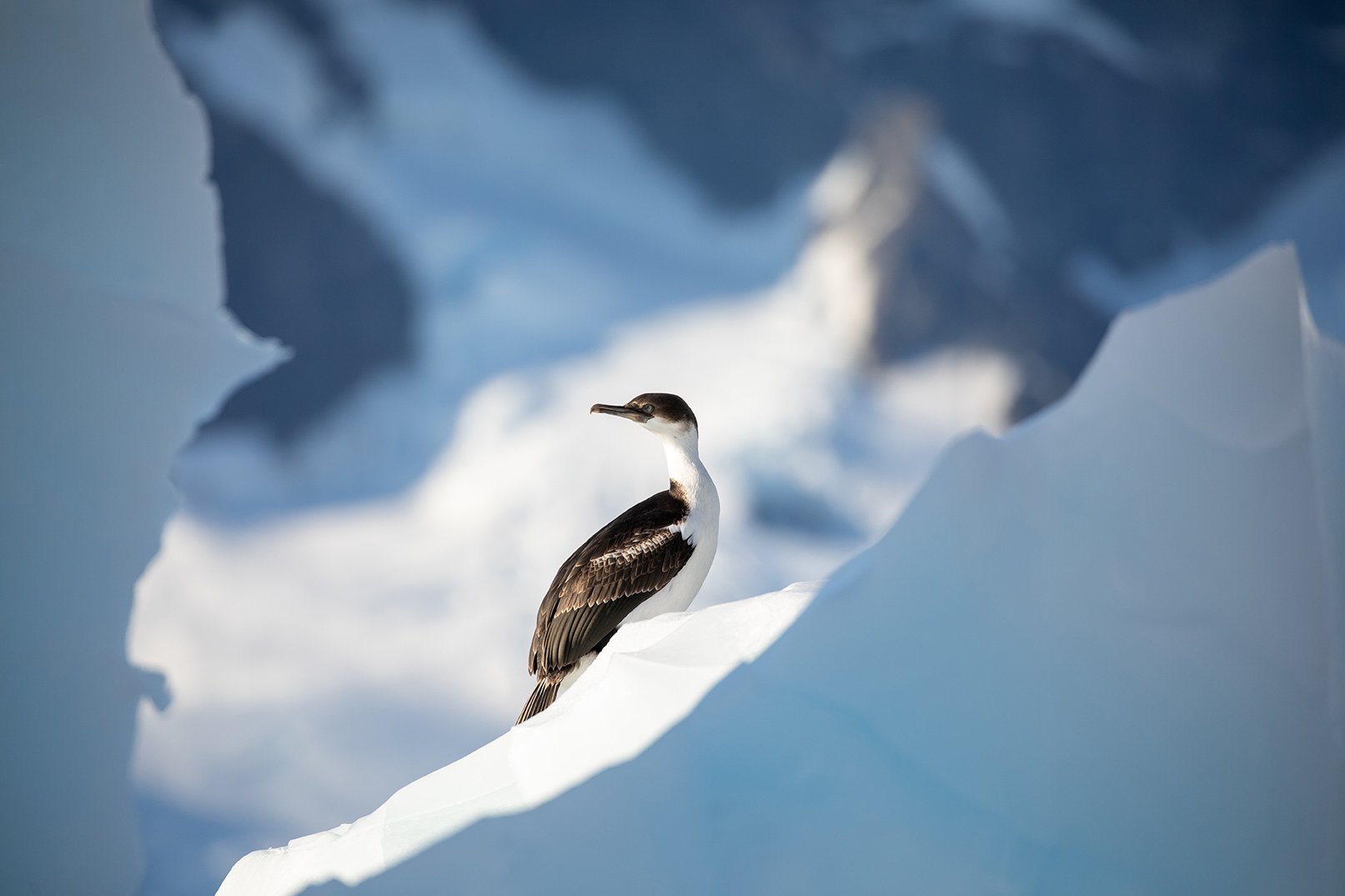
The Antarctic shag like other cormorant related animals is mostly black, but is recognizable from other cormorants species due to the characteristic yellow found on the Antarctic shag's forehead. Young Antarctic shags are more brown than black, and do not have the yellow forehead markings until they are older.
The Antarctic shag is not migratory, and colonies typically only move in order to find unfrozen waters for feeding. Most commonly the Antarctic shag eats fish, octopuses, crustaceans and other invertebrates. Interestingly, males eat more fish than females (females are more known to eat smaller invertebrates), and this is likely due to the difference in size as males are typically the larger of the two.
Imperial shag
The imperial shag is a black and white cormorant that looks almost more like a penguin than some of the other cormorant species. The imperial shag lives in on the rocky coasts of South America which you could experience on expeditions such as Essential Patagonia: Chilean Fjords and Torres del Paine.
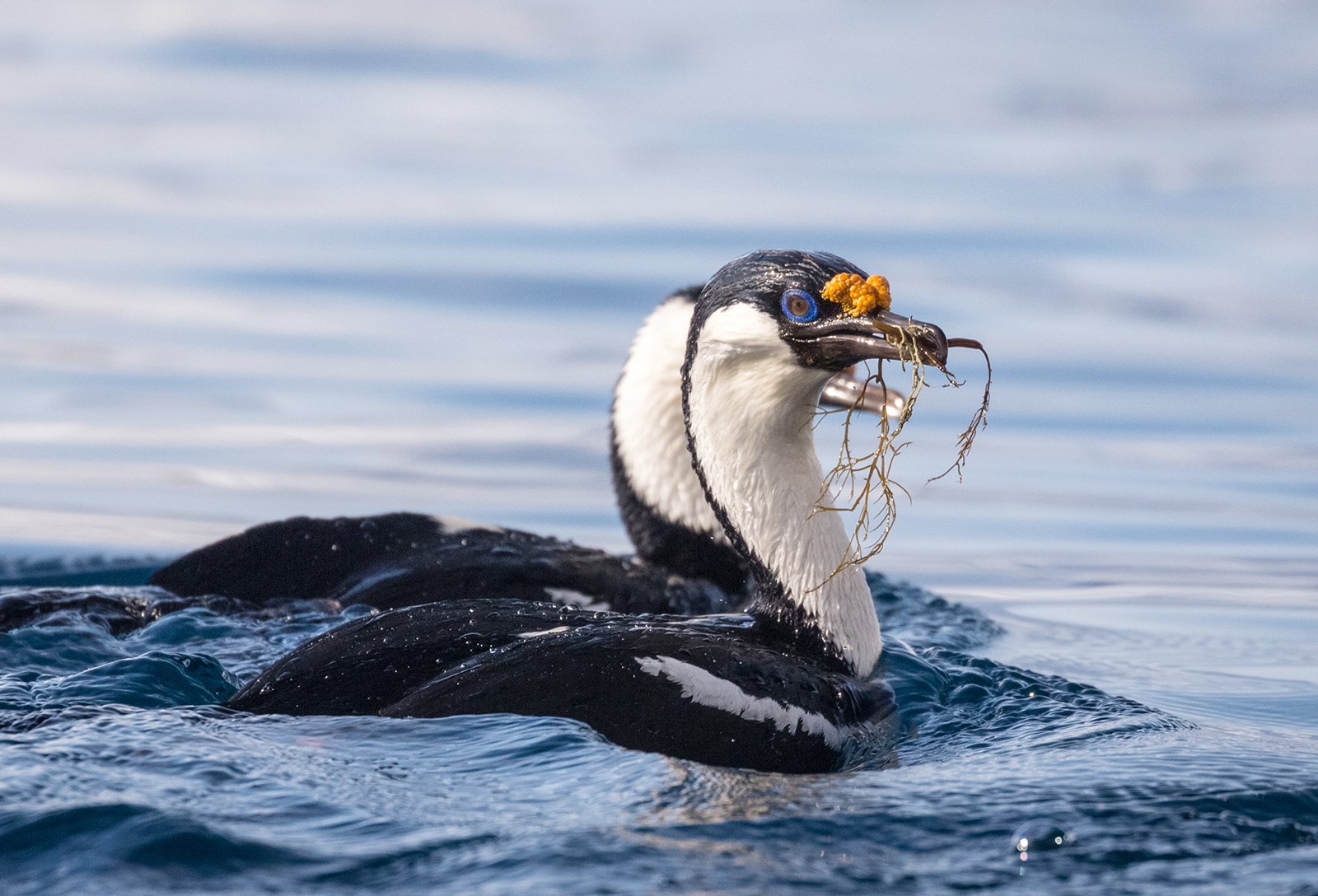
The imperial shag, sometimes also known as the blue eyed shag, is recognizable from a ring of blue skin around its eyes.
What is a cormorant?
Cormorant is a name for numerous species in the cormorant bird family.
Cormorants are medium-to-large aquatic birds that spend little time throughout the day foraging, and spend most of their days resting or preening their feathers. All species have gland that secretes oil that makes the cormorant feathers waterproof that helps the birds to stay warm and dry in cold conditions even when they must dive and swim to feed.
On average, cormorants in the wild tend to live 6 years.
What do cormorants eat?
Cormorants are carnivores. They are fish eaters that eat many different kinds of fish, as well as amphibians, crustaceans, eels, water snakes, and insects in habitats where there are available.
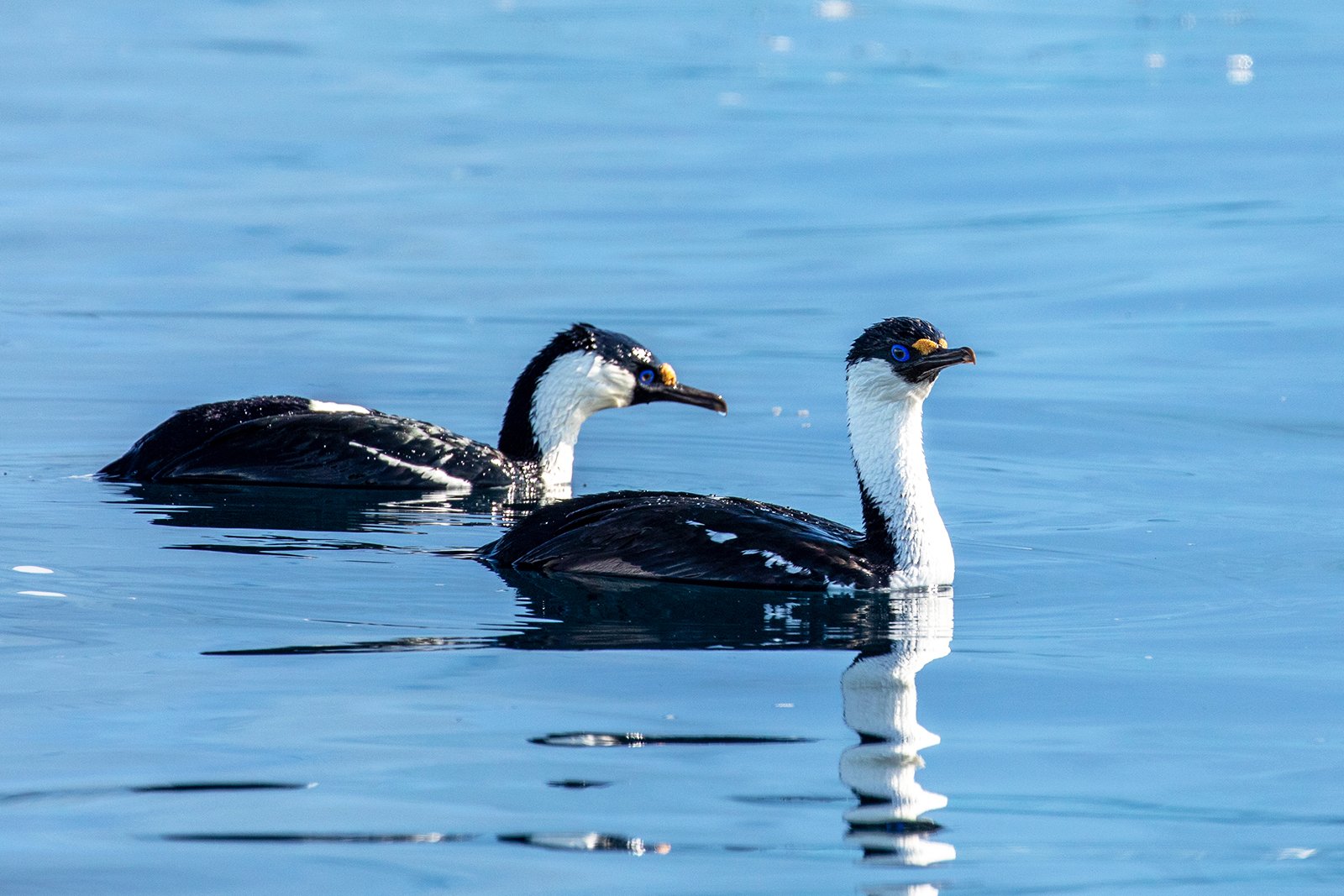
Cormorants are expert divers, a skill they use when catching fish. Some have been known to dive as deep as 150ft (45m) and they swim very quickly, using their webbed feet to propel them and their wings to steer.
Cormorants' short wings make them incredibly agile swimmers, and cormorants actually use less energy swimming than when flying. In fact, they have the highest flight cost of any flying bird.
Some cormorants are also known for their ability to use rocks as tools to help them open the shells of prey they have captured.
Cormorants fishing skills are so impressive that Chinese fishermen historically used cormorants to help them fish. Fishermen would use a tie around the bird's throat to allow them to only swallow small fish, that left the large fish stuck for the fisherman to retrieve at the fisherman's raft.
Where do cormorants live?
Cormorants live in coastal areas in almost every country throughout the world. They are aquatic birds known for their deep diving abilities to catch fish.
Cormorants are colonial nesters, meaning they are social birds who nest together in large groups called colonies, and some colonies consist of up to 4,000 individuals. Many cormorant species also hunt together and are known to use vocalizations to communicate with each other.
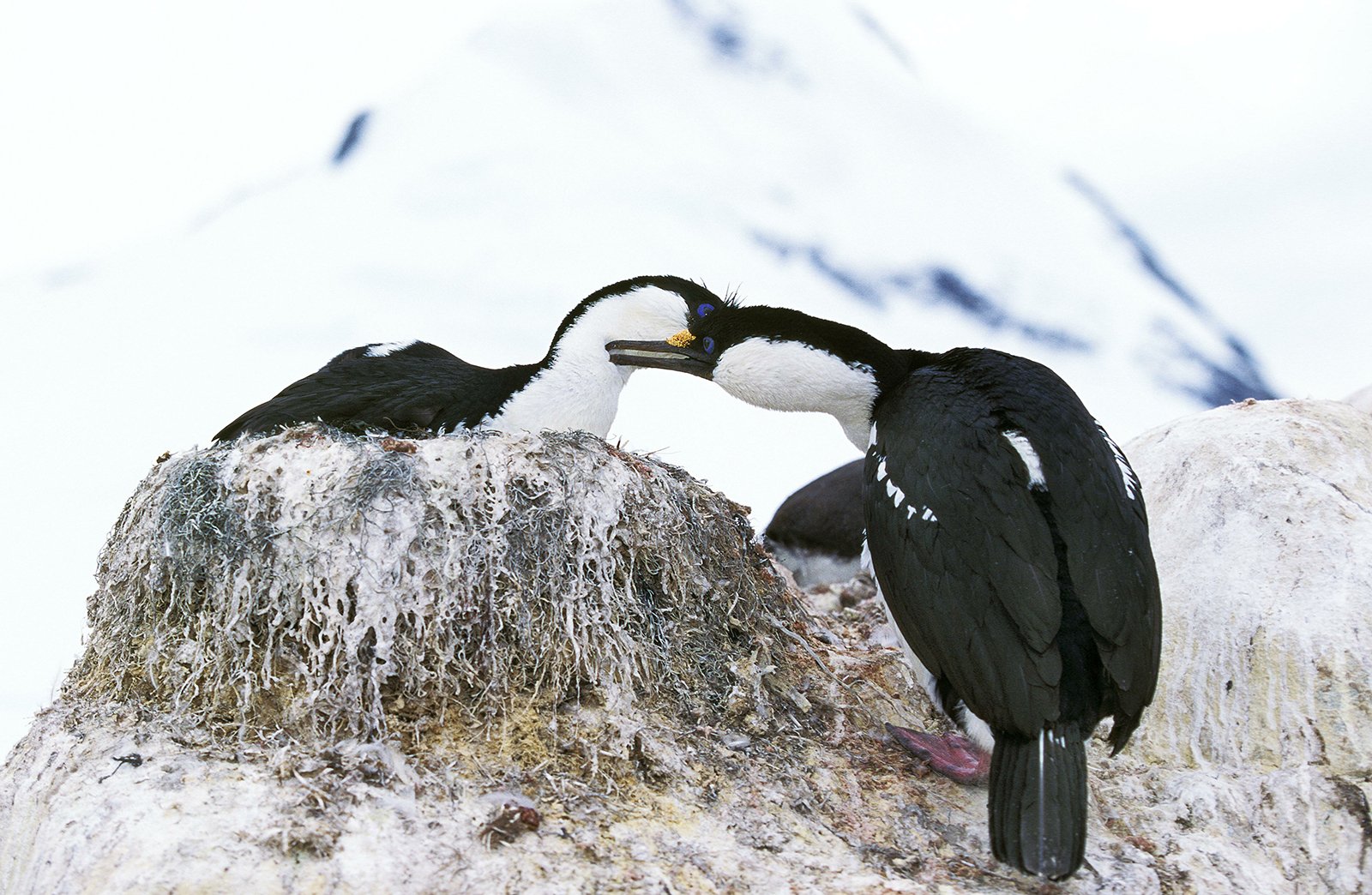
Cormorants reach sexual maturity at the age of 2 or 3 and during breeding season they form pairs after performing a variety of behaviors, including singing and dancing, to attract a mate. Once a pair has bonded, they mate and lay eggs in nesting sites that can be on the ground, on rocks, atop trees, on cliffs or rocky islets - all commons places where cormorants nest.
Parents share responsibilities during the incubation period of 27 to 31 days before the cormorant chicks are born. When the chicks hatch, they are blind and completely rely on their parents for food, warmth and protection. Juvenile cormorant diets consist of small fish and crustaceans that both parents bring back to the nest site for them.
At 9 to 10 weeks, the chicks are grown and independent.
Do cormorants migrate?
Some cormorant species migrate while others are sedentary.
Cormorants migrate from one place to another at different times of the year. For some, migration is caused by changes in temperature or changes in food availability. For other birds, migration happens from their breeding grounds after breeding season to where they spend their winters.
Are cormorants protected?
Since global cormorant populations are in the millions they are not considered an at risk species in danger of extinction. In fact, the earliest known modern bird had a very similarly structured body to the cormorant so this species could be one of the oldest on the planet. Archeological evidence suggests that birds very similar to the cormorant lived alongside dinosaurs who survived that extinction.
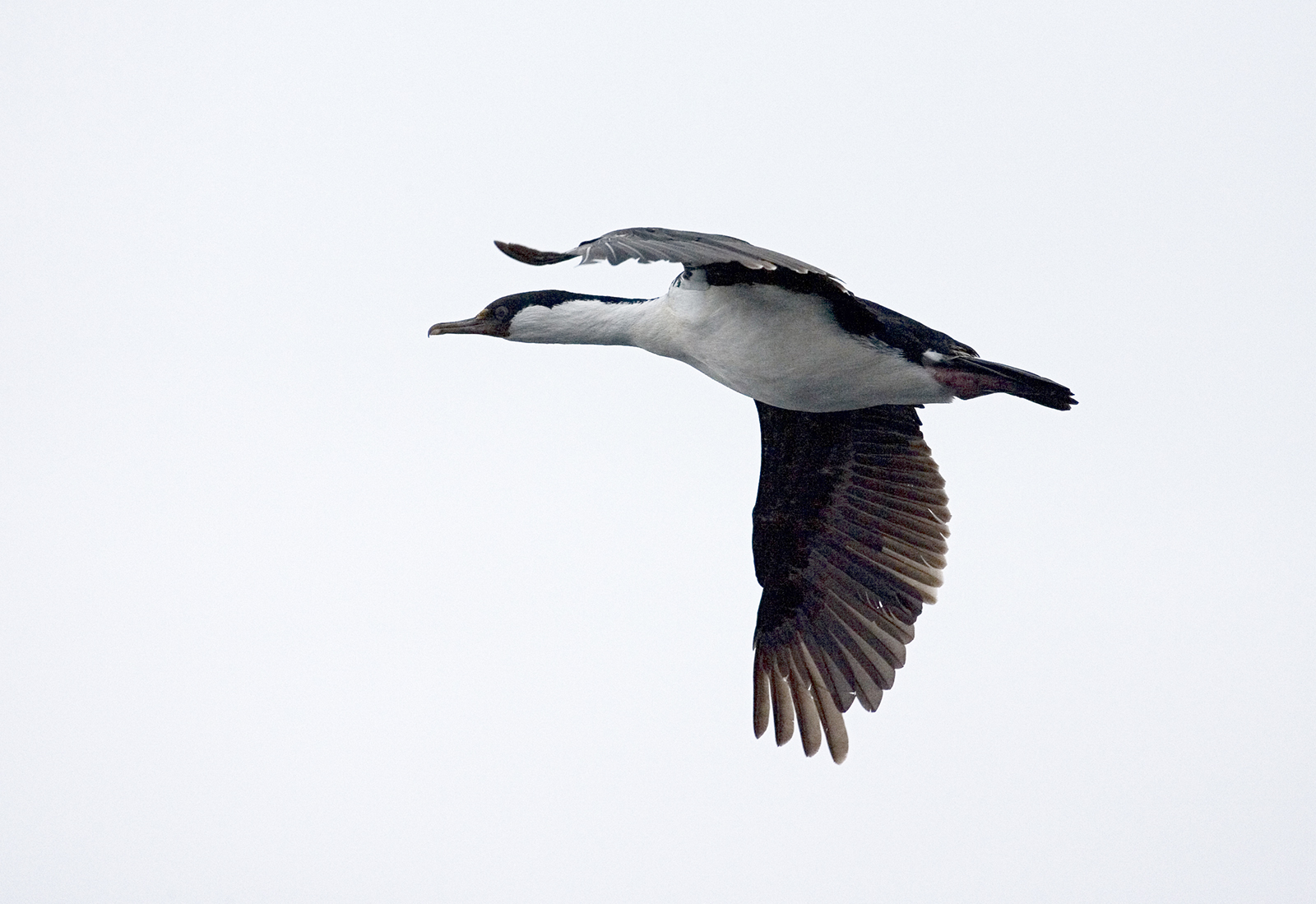
That being said, there are certain cormorant species that may be endangered or threatened due to localized circumstances such as habitat destruction, and pollutants to their natural environment.
In some countries and regions around the world cormorants are protected by law.
How long can a cormorant stay underwater?
As expert divers, cormorants can stay underwater for several minutes at a time. Some cormorant species have been recorded diving to depths of 150 feet.
Don't miss your chance to see an amazing Antarctic cormorant in their natural habitat and book your polar adventure today!

